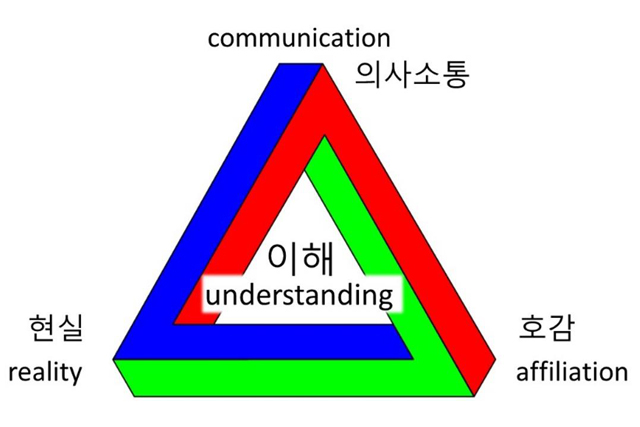
The best way to build a doctor-patient relationship is to rely on enhancing three factors
By David Lee, L.Ac.
A patient’s recovery heavily relies on their trust in their doctor’s expertise. A highly skilled doctor can inspire hope for miraculous improvement, but a lack of UNDERSTANDING (이해) between the patient and doctor often leads to the patient falling out of care. This understanding cannot be achieved through a one-way, top-down approach. Rather, when the patient participates in their treatment, willingly and continuously visiting the clinic, it is a testament to the doctor’s ability to help patients understand the treatment plan, which is crucial in developing trust and commitment to treatment.
During the COVID lockdown, when most acupuncture clinics were experiencing a severe downturn, utilizing the triangle of UNDERSTANDING became a secret weapon that doubled my practice.
Since 2000, I have been practicing full-time, and this year 2023, my business is thriving more than ever with an impressive 175 to 195 patient visits per week. This significant increase is noteworthy as prior to 2019, my average patient visits per week were only 110. However, during the initial COVID lockdown in 2020, visits sharply declined to a mere 50 per week. Despite this, by leveraging the triangle of UNDERSTANDING (이해), my practice was able to bounce back and gain momentum. As a result, in 2022, my practice consistently saw an impressive 170 patients per week.
Having good medical skills was important, too. East Asian medicine with acupuncture, diet, and herbal medicine proved to be one of the most effective methods for combating the coronavirus outbreak. When the immune system was strong, patients were better protected.
While a doctor’s phenomenal skill is important, the ability to have patients understand the treatment plan is the key to building trust. This is achieved by establishing the three pillars of COMMUNICATION (의사소통), AFFILIATION (호감), and REALITY (현실). Increasing any of these automatically increases the other two, and increasing all three simultaneously is magical.
COMMUNICATION (의사소통) is a clear conveyance of information to the other. Doctors communicate with the patients the intentions, duplicated upon arrival to the patient. Likewise, when patients walk into the clinic, they are ready to listen and converse because they are interested in making sure the doctor knows their discomforts.
AFFILIATION (호감) is a liking. The doctor and patient liking the same thing also increase the patient’s trust. Common liking can be something simple like good weather or a sports team. Whatever helps the patient, like the doctor, will increase the AFFILIATION, thus UNDERSTANDING.
REALITY (현실) is what the patient perceives as correct. Often, patients assume that only 2 to 3 treatments will take care of their health problem. But the doctor’s assessment requires 10 to 20 visits with acupuncture and herbal medicine to resolve the problem. The doctor must convey this reality to the patient. The patient, in turn, must COMMUNICATE back to the doctor that it will take 10 to 20 visits with acupuncture and herbal medicine to establish significant and lasting relief. This is an acknowledgment that the patient has heard and can duplicate the words to the doctor.
Remembering that patients cannot pick and choose their treatments is essential. The doctor’s role is to diagnose, recommend, and treat patients. However, the patient decides to follow through with the recommended treatments. Following the necessary treatment plan benefits the patient and doctor, increasing the likelihood of a successful outcome.
In conclusion, enhancing the three pillars of communication, reality, and affiliation can create a solid foundation for mutual understanding between doctors and their patients. Establishing this mutual understanding improves the patient’s trust in the doctor and commitment to treatment, leading to a successful recovery.
































